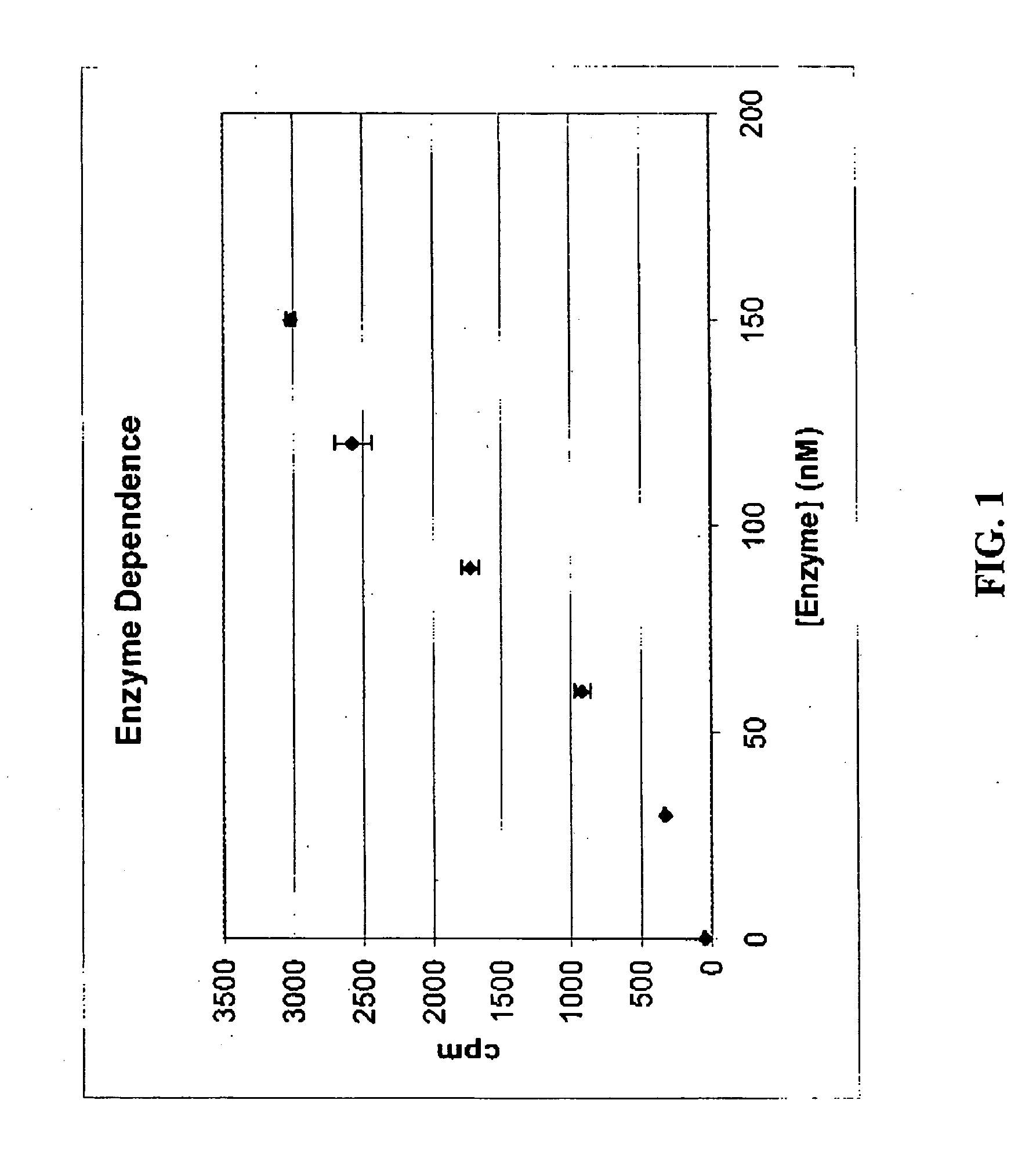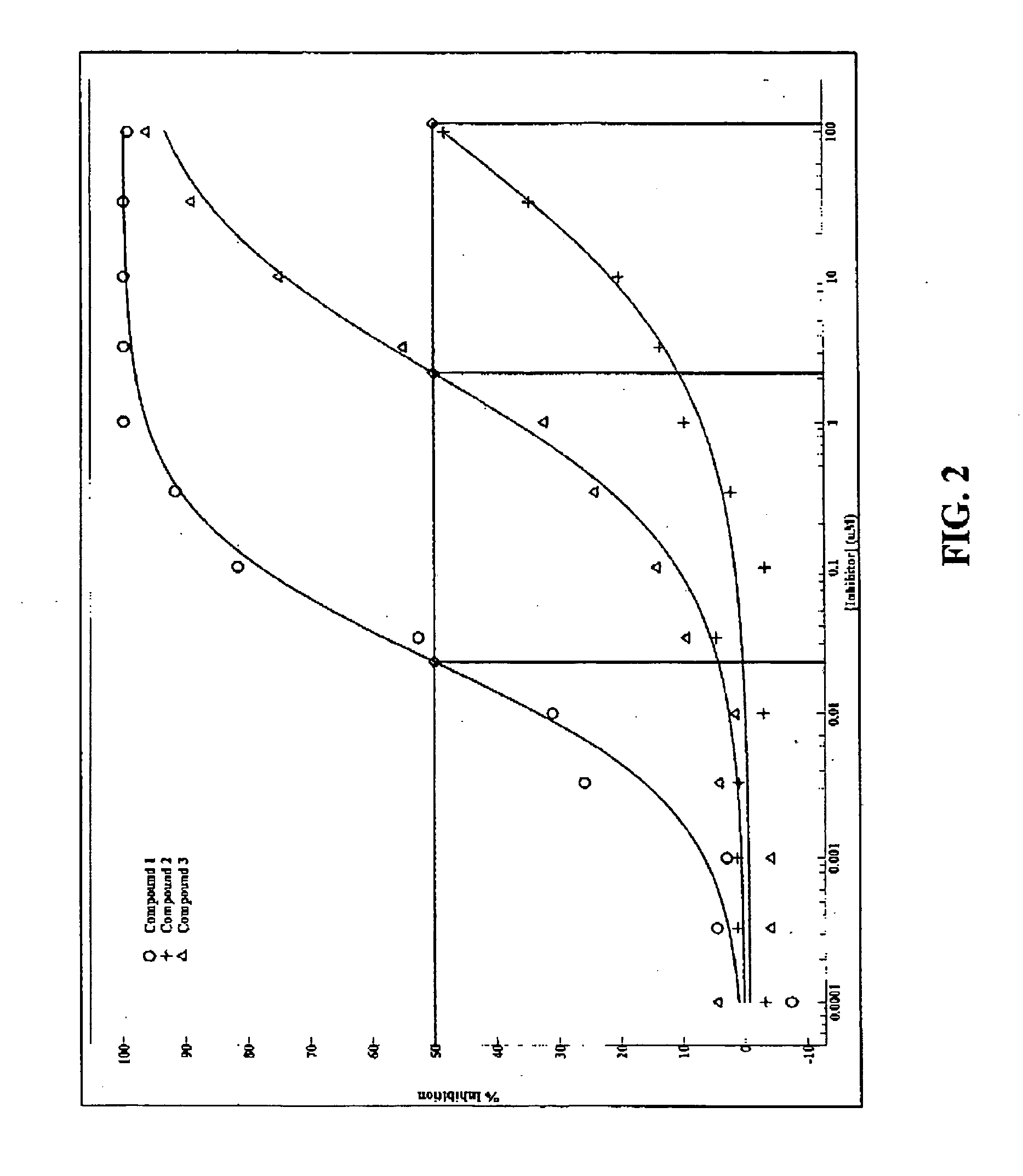Scintillation proximity assay for measuring polymerase activity
- Summary
- Abstract
- Description
- Claims
- Application Information
AI Technical Summary
Benefits of technology
Problems solved by technology
Method used
Image
Examples
example 1
HCV NS5B RNA Polymerase Assay
[0030] N-terminally histidine tagged HCV polymerase, derived from HCV BK strain, genotype 1b (NS5B570n-BK) contains a 21 amino acid deletion at the C-terminus relative to the full-length HCV polymerase and is purified from E. coli strain Ml5. The construct containing the coding sequence of HCV BK strain amino acid residues 2421-2999 (GenBank accession number M58335) downstream of a Taq promoter expression cassette was inserted into plasmid constructs. The plasmid constructs were transformed in E. coli and colonies were inoculated and grown overnight in 10 L of Terrific broth (Tartoff and Hobbs) supplemented with 100 μg / mL ampicillin at 37° C. Protein expression was induced by addition of 1 mM isopropyl-β-D-thiogalactopyranoside (IPTG), when optical densities reached between 1.5 and 3.5 OD600 and the culture was then incubated for 16- to 18 h at 22° C. NS5B570n-BK was purified to homogeneity using a three step protocol including subsequent column chromat...
example 2
HIV-1 Reverse Transcriptase Assay
[0032] Recombinant reverse transcriptase (RNA-directed DNA polymerase) from HIV-1 strain can be expressed in E. coli and purified as described in Mizrahi et al., Arch. Biochem. Biophys. 1989 273:347-358. The reverse transcriptase is added into microtiter plate and mixed with 5 μg / ml poly (rA) template pre annealed to 2.5 μg / ml oligo (dT)16 primer, and 1 μM dATP, dCTP, dGTP and 1 μCi [methyl-1′2′-3H] dTTP (Amersham TRK-576) in a buffer consisting of 40 mM Tris (pH 8.0), 4 mM magnesium acetate and 4 mM DTT. Reaction is run at 37° C. for 30 min. After incubation a solution containing 100 mM sodium acetate (pH 3.0) and 2.3 mg / ml Protein A-PVT SPA beads is added to each well and the samples are treated and scintillation is detected as described in Example 1.
example 3
E. coli DNA Polymerase I (Klenow) Assay
[0033] The polymerase activity of E. coli DNA Polymerase I Large (Klenow) Fragment which is commercially available (e.g. Invitrogen Cat. No. 18012-021) can be assayed using the methods described in Example 2 but using as template either double-stranded DNA with free 3′-hydroxyl ends (e.g. generated by DNase I digestion) and no primers or single-stranded DNA with specific or random primers.
PUM
 Login to View More
Login to View More Abstract
Description
Claims
Application Information
 Login to View More
Login to View More - R&D
- Intellectual Property
- Life Sciences
- Materials
- Tech Scout
- Unparalleled Data Quality
- Higher Quality Content
- 60% Fewer Hallucinations
Browse by: Latest US Patents, China's latest patents, Technical Efficacy Thesaurus, Application Domain, Technology Topic, Popular Technical Reports.
© 2025 PatSnap. All rights reserved.Legal|Privacy policy|Modern Slavery Act Transparency Statement|Sitemap|About US| Contact US: help@patsnap.com


